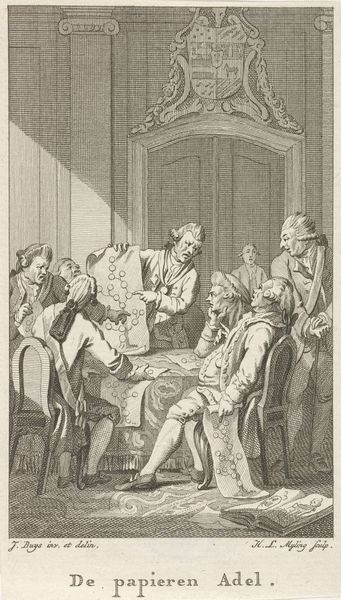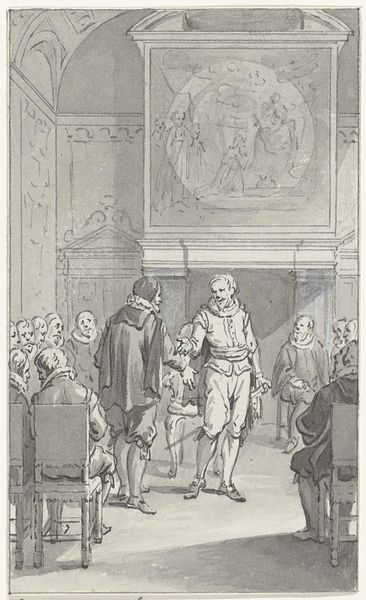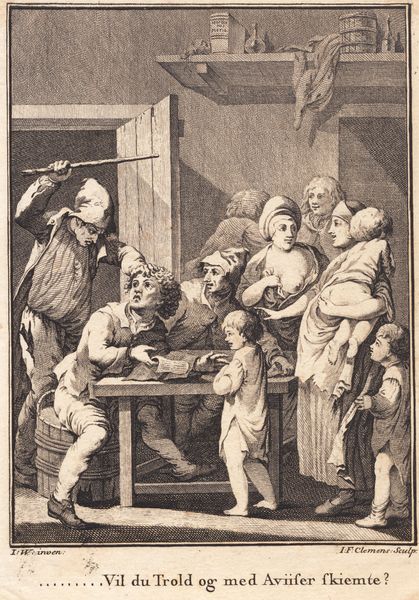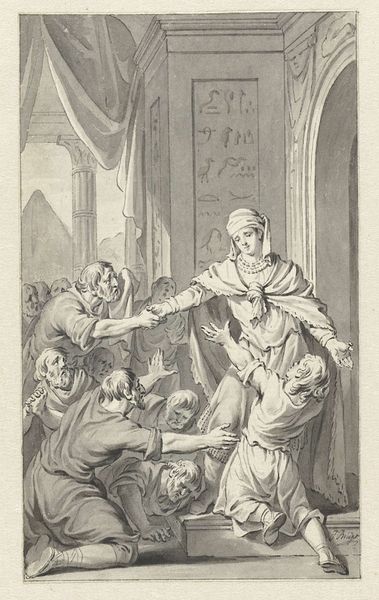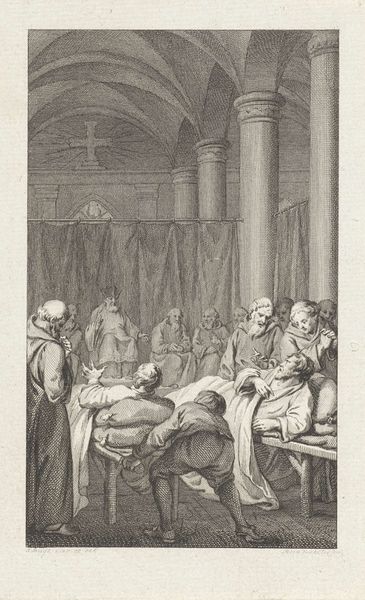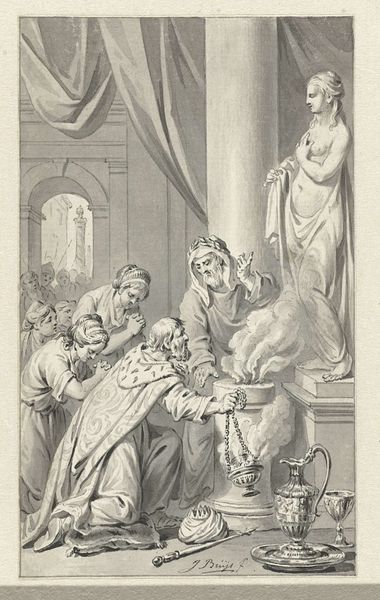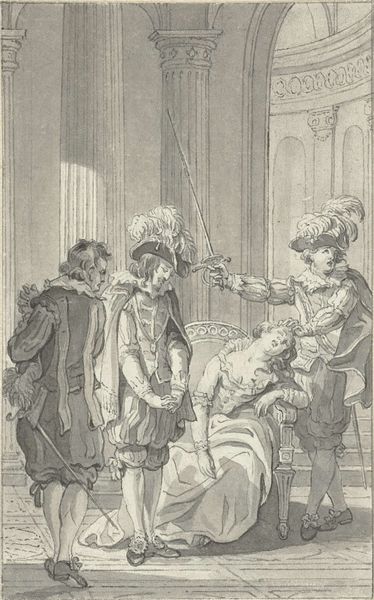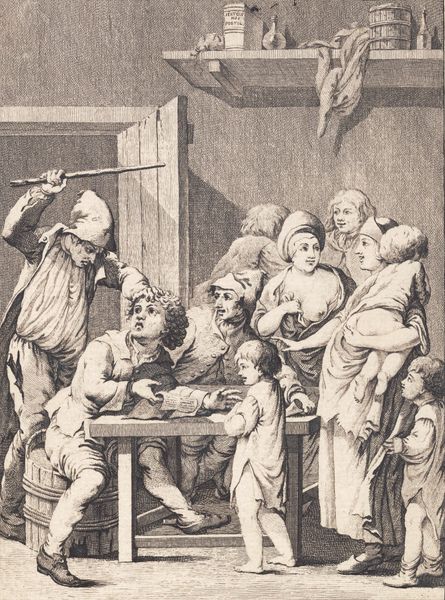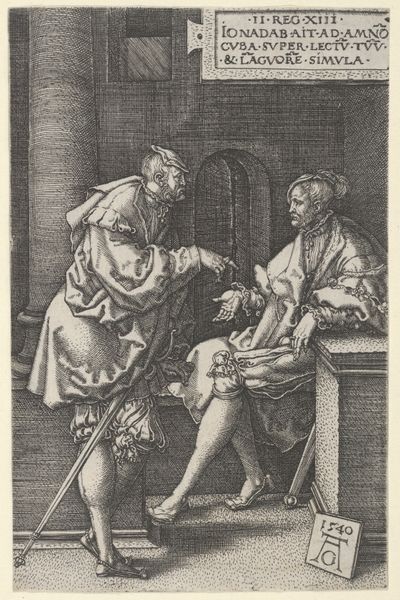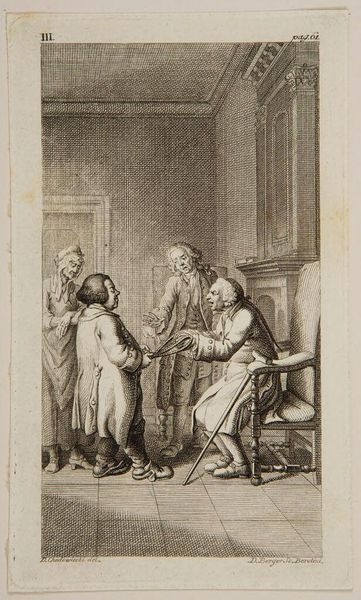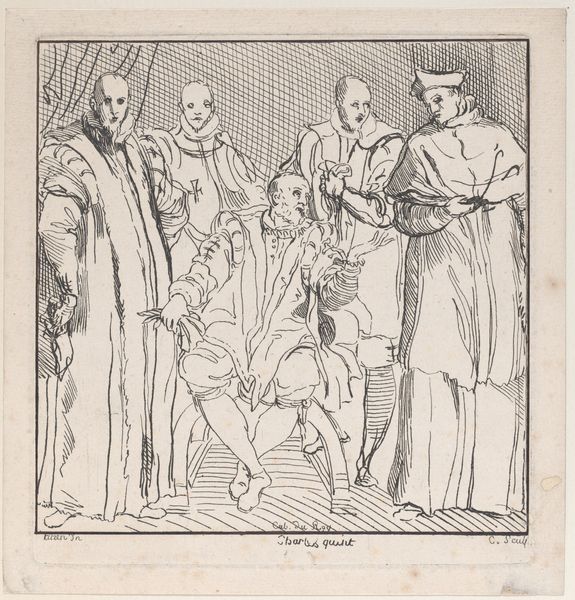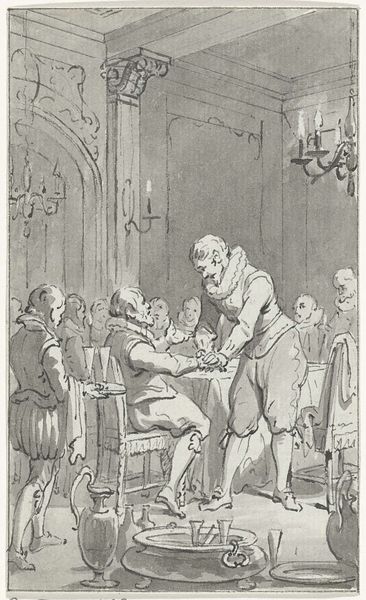
Illustratie voor het toneelstuk Het mislukt bedrog van F.W. Gotter 1791
0:00
0:00
reiniervinkeles
Rijksmuseum
drawing, etching, paper, ink, pen
#
drawing
#
etching
#
pencil sketch
#
etching
#
paper
#
ink
#
romanticism
#
pen
#
genre-painting
#
history-painting
Dimensions: height 128 mm, width 80 mm
Copyright: Rijks Museum: Open Domain
Curator: Here we have Reinier Vinkeles’ illustration made in 1791 for F.W. Gotter’s play, “The Frustrated Deception,” housed here at the Rijksmuseum. It’s an etching, ink, and pen drawing on paper. Editor: It's interesting how the scene uses a simple etching technique to convey so much turmoil. Look at those wild gestures and worried faces; there's almost a frenetic energy captured by these gray washes and outlines! Curator: Indeed! Vinkeles, situated in the late 18th century, demonstrates a fascinating intersection between Romantic ideals and Enlightenment drama through this piece. The play was a popular comedic genre at the time, usually centered around moral or societal reform. Notice the man entering at the right - he’s a patriarchal figure, perhaps embodying those traditional values being challenged. Editor: The staging here is striking as well. How each figure reacts contributes to the narrative, and the dramatic lighting adds an operatic feel. But, beyond the societal commentary, what materials were accessible to an artist like Vinkeles to produce such emotional impact? The layering is clever considering it is executed with etching, ink, and pen. Curator: Well, etching was widespread, allowing artists to reproduce images quickly for mass consumption and spread progressive ideologies. Theatre at this time became an important place of social debate and artistic creation and thus, by recreating stage drama on paper Vinkeles provided affordable art. Editor: That's what grabs my interest; this piece underscores how printmaking democratized art forms during this era. It challenges how art and craftsmanship have traditionally been conceived as belonging to separate categories, in effect liberating images for wider consumption! Curator: Absolutely, it is through this lens we understand how images participated in social and political debates! Thanks for highlighting those connections. Editor: Thanks; that's how we can think about these artifacts beyond just "fine art," considering the materials, context, and labor of art production to expand our understanding.
Comments
No comments
Be the first to comment and join the conversation on the ultimate creative platform.

